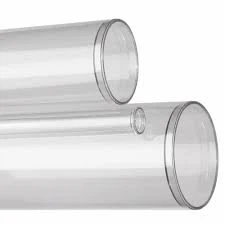des . 23, 2024 07:17 Back to list
Understanding the Benefits and Applications of PP Welding Rods in Various Industries
Understanding PP Welding Rods A Comprehensive Overview
Polypropylene (PP) welding rods are essential tools in the realm of plastic fabrication and repair. These rods are specifically designed for welding polypropylene, a thermoplastic polymer known for its excellent chemical resistance, low density, and high tensile strength. In various industries, from automotive to packaging and beyond, PP welding rods play a crucial role in ensuring durability and efficiency in manufacturing processes.
Characteristics of PP Welding Rods
PP welding rods are typically extruded from polypropylene resin and come in various diameters and lengths to accommodate different welding needs. One of the standout features of PP is its impressive melting point, approximately 160-170 degrees Celsius (320-338 degrees Fahrenheit). This characteristic makes it suitable for applications requiring heat resistance, like in automotive parts and consumer goods.
The rods are also compatible with several welding methods, including hot air welding, extrusion welding, and infrared welding. The choice of technique largely depends on the specific application, the complexity of the joints, and the desired strength of the finished product. Hot air welding, for example, is commonly used for thinner sheets of polypropylene, while extrusion welding is favored for thicker materials.
Applications of PP Welding Rods
PP welding rods have diverse applications across numerous industries. In the automotive sector, they are utilized to repair components like fuel tanks, bumpers, and interior trim parts. The rods' resistance to chemicals and moisture makes them ideal for unprotected environments, ensuring that repairs hold up over time.
pp welding rod

In the field of manufacturing, PP welding rods are used in fabricating tanks, containers, and piping systems. Their ability to withstand impact and environmental stress makes them suitable for industrial applications where durability is paramount. Additionally, the food industry benefits from PP's non-toxic properties, allowing for the fabrication of storage containers that safely house consumables.
Moreover, plastic recycling processes often employ PP welding rods. The recycling of polypropylene materials not only benefits the environment but also provides cost-effective solutions for manufacturers looking to optimize their operations.
Advantages of Using PP Welding Rods
One of the primary advantages of using PP welding rods is their ease of use. Welders can achieve strong joints with minimal training, making them a practical choice for both professionals and hobbyists. Additionally, the rods exhibit excellent bonding strength when properly welded, ensuring that the final product meets the required specifications.
Another critical aspect is their affordability. Compared to other welding materials, PP welding rods offer a cost-effective solution without compromising quality. This factor is essential for businesses looking to manage budgets while maintaining high standards in production.
Conclusion
In summary, PP welding rods are integral to various industries, providing solutions for plastic welding needs that demand strength, durability, and versatility. Their ability to withstand chemicals and moisture, coupled with ease of use and cost-effectiveness, makes them a preferred choice among manufacturers and repair professionals alike. As the demand for sustainable and efficient manufacturing practices grows, the role of PP welding rods will continue to expand, highlighting their significance in modern industry. Whether in vehicle repairs or industrial manufacturing, these rods are indispensable in ensuring the longevity and performance of polypropylene products.
-
Durable PP Rigid Sheet: Lightweight, Chemical Resistant Solutions
NewsAug.21,2025
-
PVC Grey Sheet for Extraction: Chemical Resistant & Durable
NewsAug.19,2025
-
Durable PVC Pipe Fittings for Plumbing & Irrigation Needs
NewsAug.18,2025
-
HDPE Steel Belt Reinforced Spiral Corrugated Pipe | High Strength
NewsAug.17,2025
-
HDPE Pipe Fittings: Durable, Leak-Proof Solutions
NewsAug.16,2025
-
Premium CPVC Sheet: High-Temp & Chemical Resistant Solutions
NewsAug.15,2025

